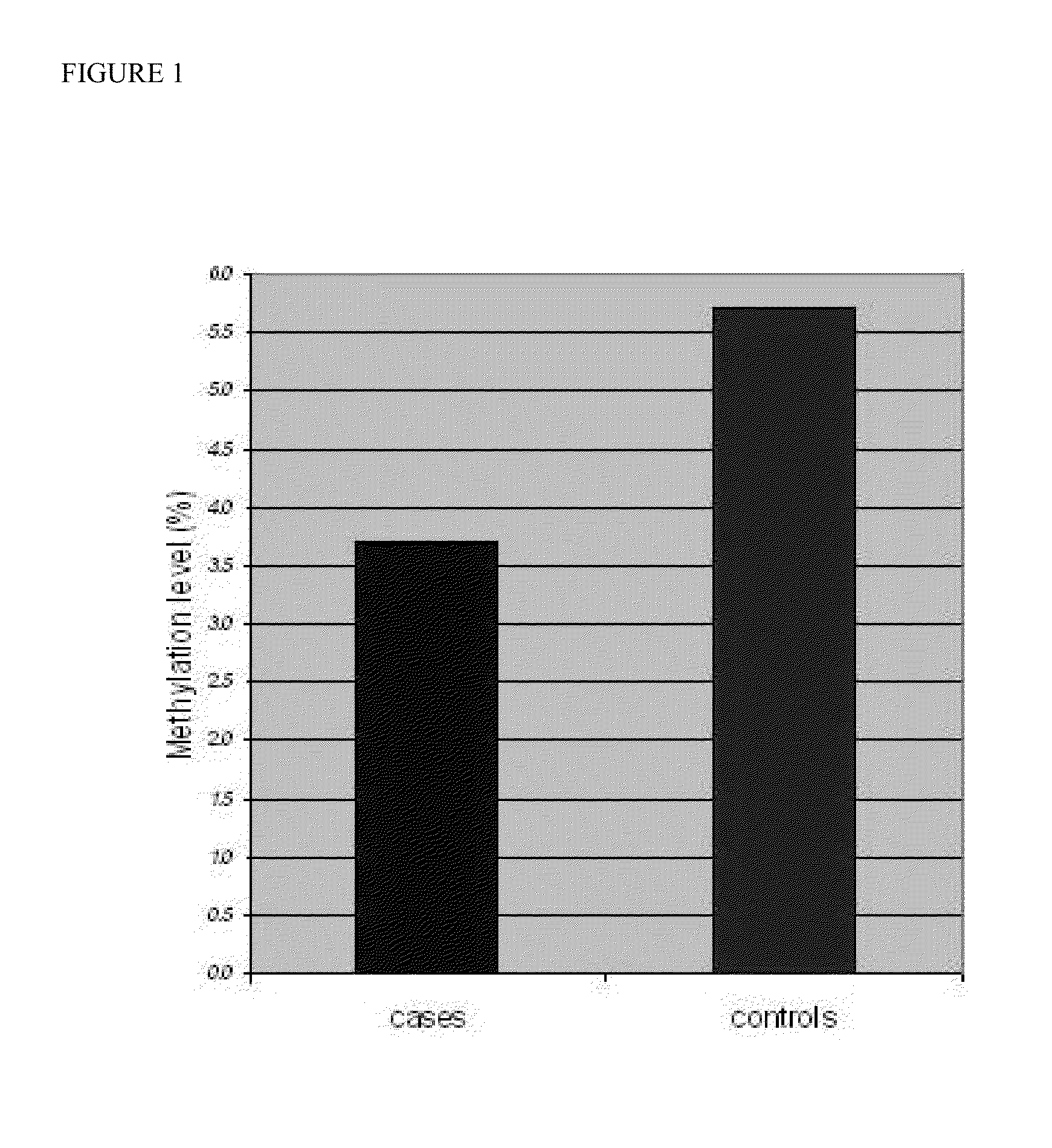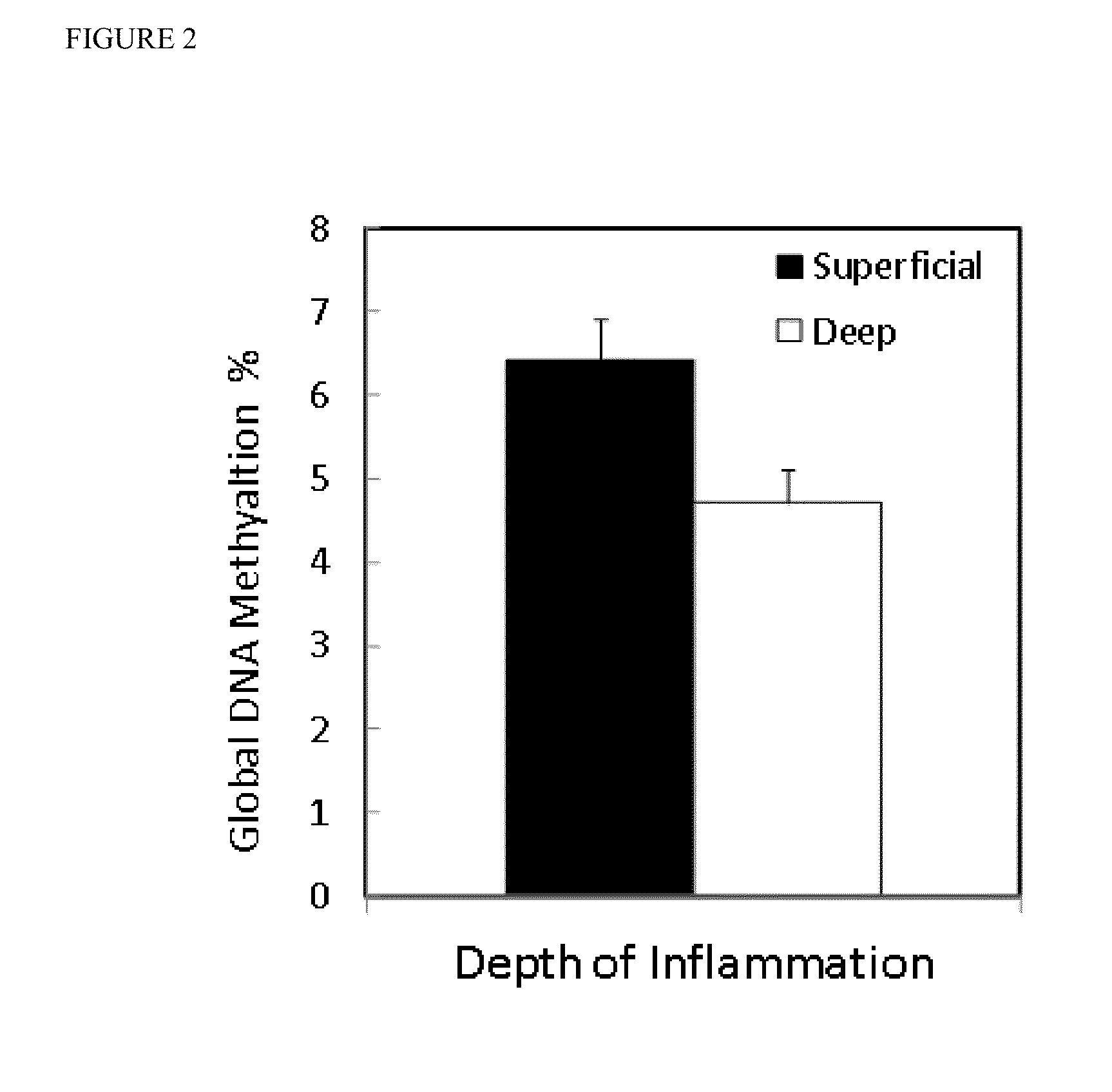Global DNA hypomethylation and biomarkers for clinical indications in cancer
a biomarker and cancer technology, applied in the field of cancer clinical indications with global dna hypomethylation, can solve the problems of poor prognosis for advanced gc, hcc patients cannot benefit from current treatment modalities, and many missed gc endoscopy diagnoses
- Summary
- Abstract
- Description
- Claims
- Application Information
AI Technical Summary
Benefits of technology
Problems solved by technology
Method used
Image
Examples
example 1
[0063]Patients' characteristics and design of the GC case control study. Between March 2004 and June 2010, a total of 201 patients met the eligible criteria and were included in our study. Utilizing the updated Sydney system for the classification of gastritis, 25 cases clinically diagnosed as cancer, were characterized as gastritis by pathologists at two separate institutions. Thus a second study cohort had been introduced, consisted of 50 patients in the case study group and 151 patients in the control study group. Table 1 summarizes the pathological characteristics of the patients comprising the control study group.
[0064]
TABLE 1Classification of control study group (gastritis patients)according to pathological characteristics.ControlsSuperficialDepthHistologyInflammationInflammationLevel of inflammationMild4118Moderate3334Severe1212n / da1AtrophyNegative8540Positve224Intestinal MetaplasiaNegative8334Positive430Negative3336Positive5427n / da1aNo available data
example 2
[0065]Evaluation of GDMI and statistical analysis and discrimination between control and case study group.
[0066]The control cases found to possess an increased prevalence of global DNA methylation whereas the case study group had a global hypomethylation profile. The mean GDMI for the control study group was estimated to 5.7 (95% CI, 4.93-6.41) and the mean GDMI for the case study group was 3.7 (95% CI, 2.99-4.39), providing a statistical significant discrimination between the two groups (p=0.0016) (FIG. 1).
example 3
[0067]Evaluation of GDMI according to histological classification in control study group.
[0068]The statistical analysis of the control study group was separated into two parts, according to the grade of inflammation. First DNA methylation levels were measured among all gastritis patients to distinguish those with superficial inflammation, and deep inflammation. Subsequently, the patients with deep inflammation were discriminated by pathological characteristics.
[0069]Among all gastritis patients, a statistically significant difference (p=0.02) was found in the GDMI between patients with superficial (mean GDMI=6.4, 95% CI, 5.34-7.5) and deep inflammation (mean GDMI=4.7, 95% CI, 3.74-5.56). Samples from gastritis patients with superficial inflammation were found to be more frequently methylated when compared to samples from gastritis patients with deep inflammation (FIG. 2).
PUM
| Property | Measurement | Unit |
|---|---|---|
| diameter | aaaaa | aaaaa |
| temperatures | aaaaa | aaaaa |
| volume | aaaaa | aaaaa |
Abstract
Description
Claims
Application Information
 Login to View More
Login to View More - R&D
- Intellectual Property
- Life Sciences
- Materials
- Tech Scout
- Unparalleled Data Quality
- Higher Quality Content
- 60% Fewer Hallucinations
Browse by: Latest US Patents, China's latest patents, Technical Efficacy Thesaurus, Application Domain, Technology Topic, Popular Technical Reports.
© 2025 PatSnap. All rights reserved.Legal|Privacy policy|Modern Slavery Act Transparency Statement|Sitemap|About US| Contact US: help@patsnap.com



